Bowers Mansion: The Chronicle of a Curious Nevada Landmark
July – August 2014
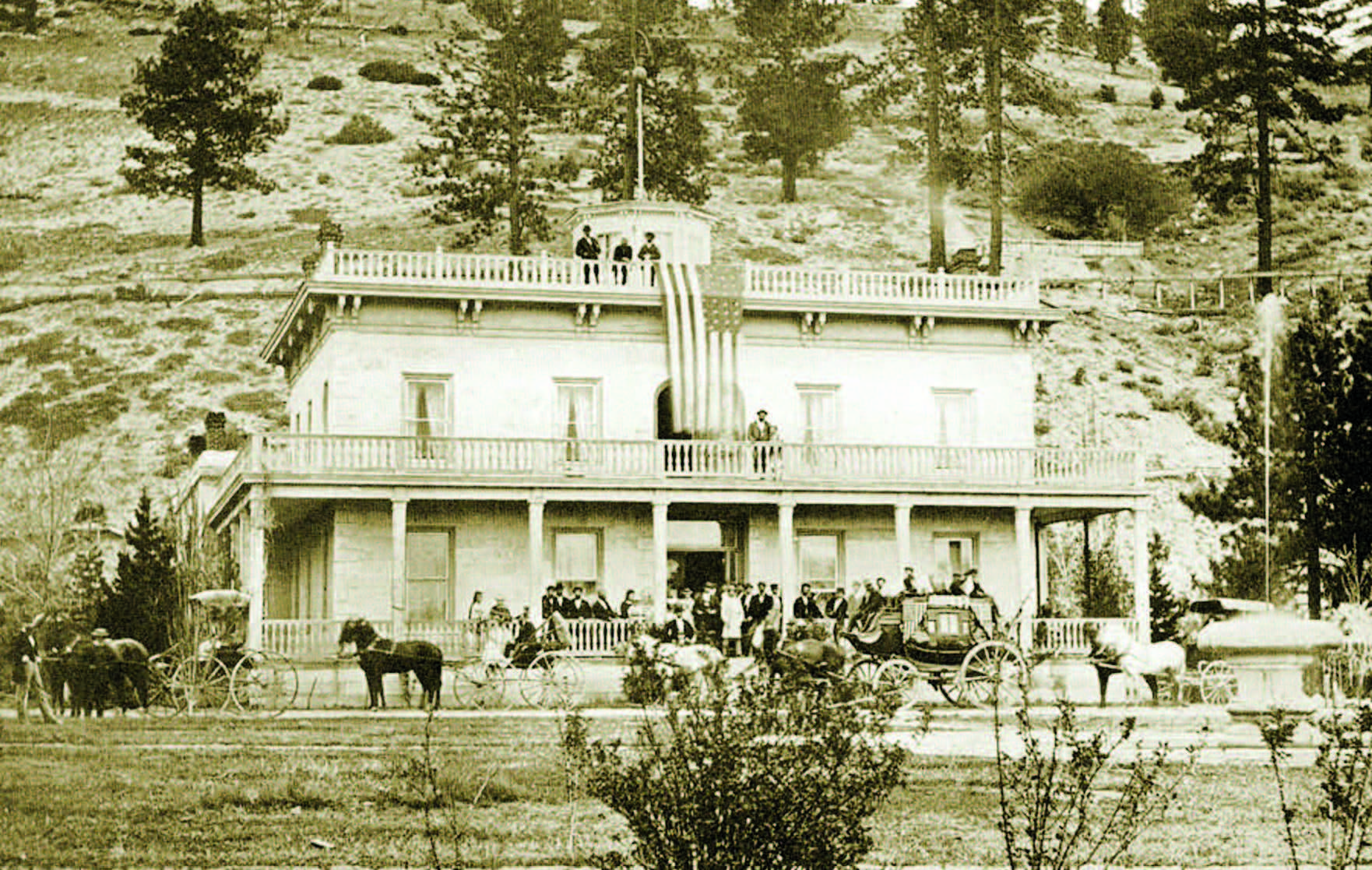
This historic icon’s influence spans more than 150 years.
BY TAMERA BUZICK
The best view of Nevada’s gold- and silver-mining days can still be seen from the Bowers Mansion porch. On a warm summer afternoon, you can sit back and enjoy the same view once seen through the eyes of early Nevadans. If you use your imagination, you can picture guests arriving for a picnic: the women in their Victorian dresses; and picnic hats covered with white Swiss and green ribbons. They arrive from every direction by horse and buggy, and train. They lay out their blankets and prepare picnic baskets. They play games, swim in the ponds, and dance throughout the day. When visiting Bowers Mansion, if you listen closely, maybe you’ll hear 150 years of children’s laughter, for the mansion has always been a popular summer destination.
LUCKY STRIKE FUELS THE FORTUNE
The mansion’s story began on the Liverpool docks in early 1849, when Eilley Oram Hunter boarded a ship bound for America. Her destination was the newly established Mormon settlement of Salt Lake City. Her first husband, Stephen Hunter, had recently converted to Mormonism and wished to live in the new church center. Soon after arriving in Utah Territory, they were divorced. Five years later, her second husband, Alexander Cowan, took her further west when he joined a mission organized to create a government at Mormon Station (Genoa), which was then in western Utah. After establishing a rudimentary frontier government, the Mormons moved their community to Washoe Valley in a small settlement they named Franktown.
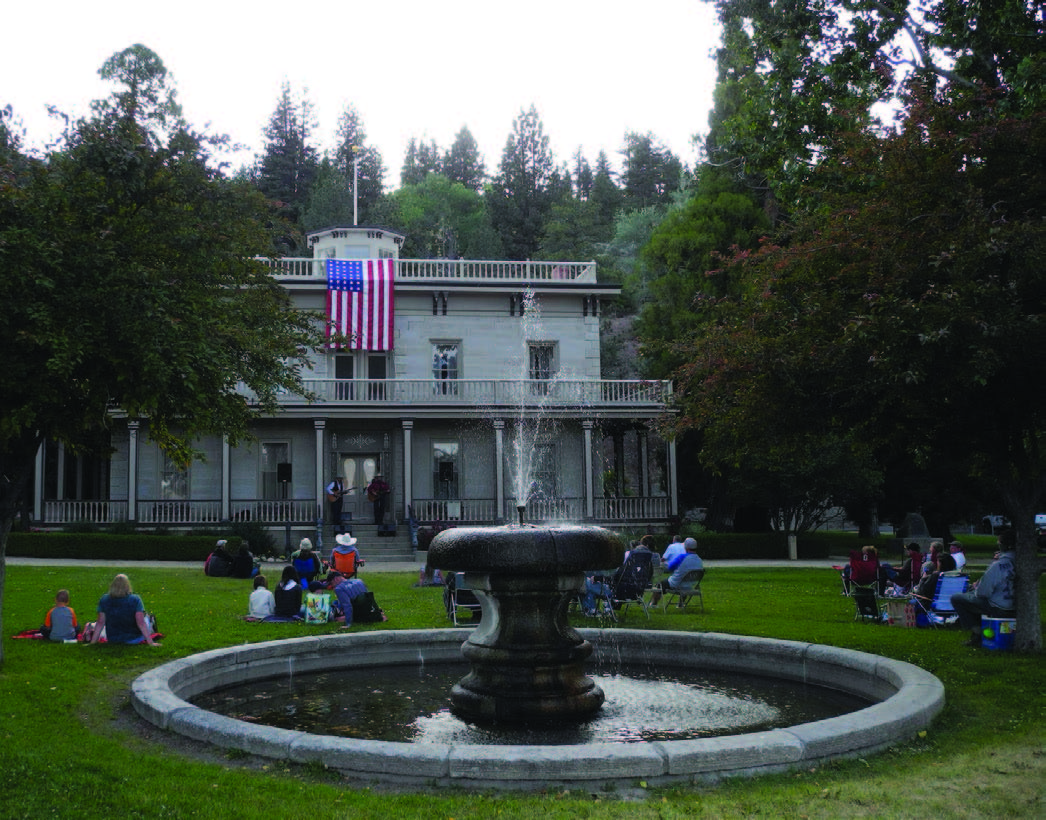
Eilley’s fortune changed in the fall of 1857, when the mission was recalled. This sent Alexander back to Salt Lake City and brought an end to their marriage. Eilley took her chances and moved to a small mining camp in Gold Canyon. She began buying and selling mining claims while running her first boarding house. Soon prospectors found enough gold to begin a rush. They established a new town named Gold Hill.
Lemuel Sanford (Sandy) Bowers was one of the new arrivals. While buying and selling mining claims, he discovered he owned a 10-foot strip right next to a 10-foot strip owned by Eilley. They joined their claims and their lives; they were married on Aug. 9, 1859. It was soon discovered their claim was part of a surface deposit rich in silver ore, making the Bowers very wealthy. One way to show their wealth was to build a mansion grander than any other in the West. When asked why he wanted to build his mansion in the newly established Nevada Territory, Sandy simply replied, “I made my money in this county, and here is where I intend to spend it.”
The rowdy town of Gold Hill was unsuitable for the castle they desired. They chose to build it in a beautiful valley, with snowtopped mountains to the west and a clear lake to the east. A place where hot and cold springs flowed calmly and the surrounding lands were open and free. Eilley and Sandy’s mansion would be built at the base of the Sierra Nevada foothills, overlooking Washoe Lake. For their new home, they chose the Washoe Valley land Eilley had acquired from Alexander in their divorce.
Constructed in 1862, the mansion had eloquently cut marble fireplaces, furnishings from Europe, and the hand-crafted inserts, hinges, and doorknobs were made of gold and silver from their mine. By the fall of 1863, the Bowers and their daughter, Persia, who they adopted during a grand 10-month excursion to Europe, were ready to move into their glamorous home.
The following summer marked the first year of seasonal entertainment. Visitors wishing to get away from the dust and noise of Virginia City and Gold Hill made the three-hour journey across Ophir Grade into Washoe Valley. Here they found tall pine trees, open pastures, and clear running water. As described by History of the Comstock Lode author Grant Smith, “It was a trip to paradise.”
Nevada’s first heyday was short lived. It wasn’t long before the Comstock silver mines played out sending the entire region
into a depression. Sandy moved back to Gold Hill hoping to save the mine. He realized the end was near and prepared to sell the famous Bowers Mine, but that never materialized. Sandy Bowers died of a lung condition at his Gold Hill residence in the spring of 1868.
PICNICKER’S PARADISE
With the mine no longer a source of income, Eilley turned the mansion into a public resort. She began advertising in local papers stating the splendid mansion included a number of fine baths, a piano, an extensive library, a billiard table, and all the comforts of home. The beautifully landscaped grounds included greenhouse shrubbery and a flower garden. Two manmade ponds were available for admiration or use; the local mineral waters were thought to contain beneficial medicinal properties. Eilley served meals at any hour and spared no expense in making Bowers Mansion the “Carlsbad of Nevada.”
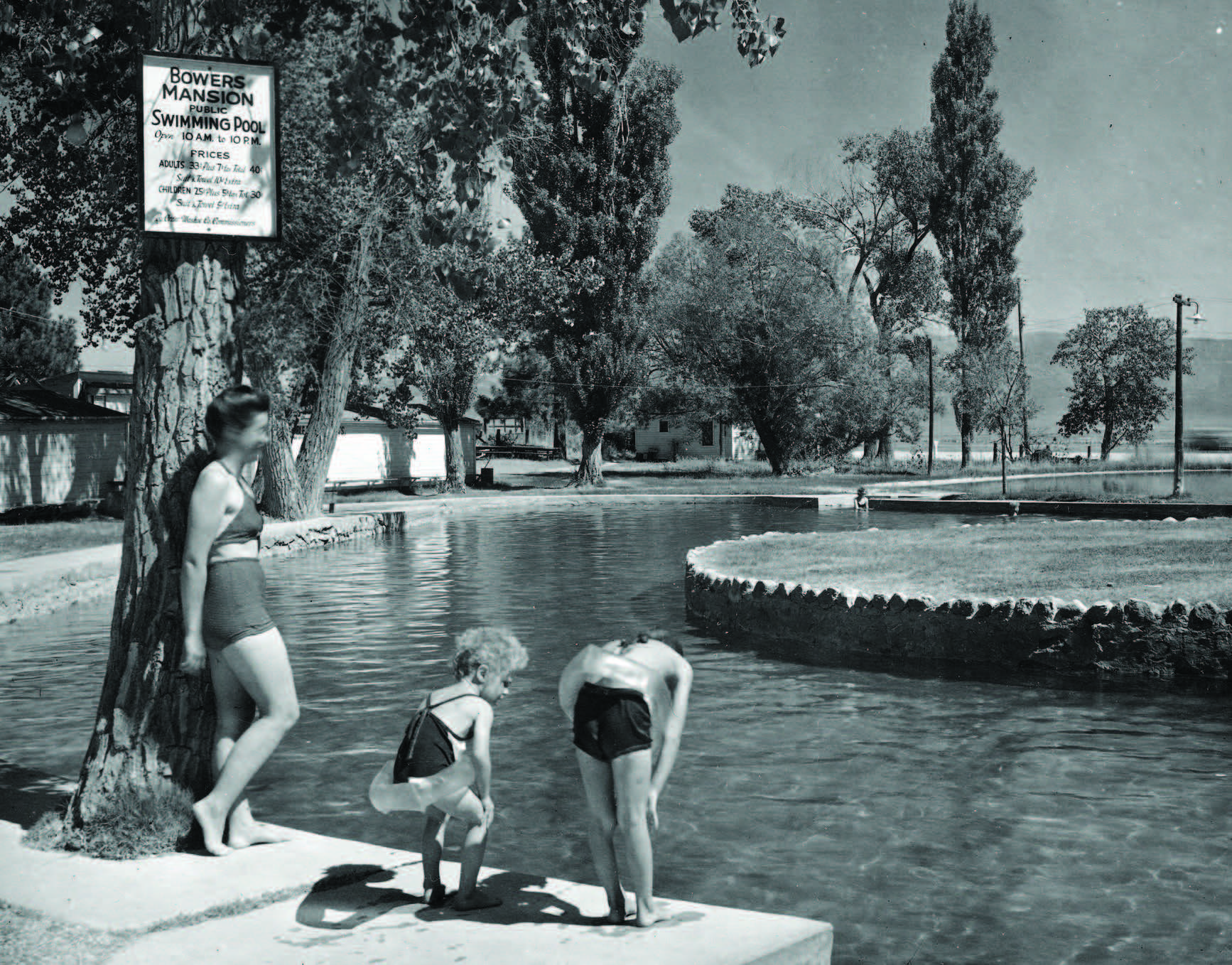
The birth of Reno and the completion of the Transcontinental Railroad were followed by the construction of the Virginia & Truckee Railroad, which made the journey to Bowers Mansion easier and more enjoyable. A silver strike in 1873 brought renewed life to the region and the mansion. With people spending money again, Bowers Mansion became a premier destination. Every weekend brought picnickers, and each year the earliest settlers, known as the Pioneers, gathered and reminisced about the old days. A local paper described a normal day:
As they arrived at the mansion, their “amiable and bustling hostess,” Mrs. Bowers greeted them. Lunch was the first activity as picnickers quickly filled the grounds. Eilley opened her mansion to her guests, so they could admire the fine building with its magnificent furniture, beautiful pictures and other splendid
objects of interest. Guests bathed in the swimming ponds, swung under the trees, waltzed on the outdoor dance floor, and generally just had a fine old time. At an 1873 picnic, the only complaint was that Washoe Lake was too far away and too shallow. One man claimed the fish had no scales on their bellies because they had
to swim so close to the bottom. As the sun began to fade behind the mountains, guests boarded the train, mounted their horses or climbed into their wagons as they departed from a grand event not to be forgotten.
The picnics were splendid and well received, but they did not help Eilley’s financial situation. To add to her hardship, she lost her daughter to appendicitis the summer of 1874. As her debt increased, and her once-beloved home began showing signs of decay, her creditors took control. On May 3, 1876, Eilley lost everything at public auction for $10,000. That summer the new owner, Myron C. Lake, canceled all social events for the year.
The mansion never returned to its Victorian glory days, but the picnics and summer entertainment continued. For the next quarter century, owners and managers opened the mansion to the public. The V&T railroad offered affordable excursion tickets allowing locals to picnic, swim, play, and dance as they did in the old days.
SUMMERTIME AT THE MANSION
The spring of 1903 brought a renewed vision when local brewer Henry Riter purchased the mansion. He quickly made repairs and reopened the mansion as a public resort. Picnickers still came by train and horse and buggy, but soon automobiles brought a new generation of visitors. Live music was replaced by a player piano and the Charleston took the place of the waltz. Riter turned the library into a bar and his wife Edna served meals in the courtyard. The swimming ponds were reinforced and improved by adding concrete, a feature not appreciated by those who remembered the ponds’ soft, sandy bottom.
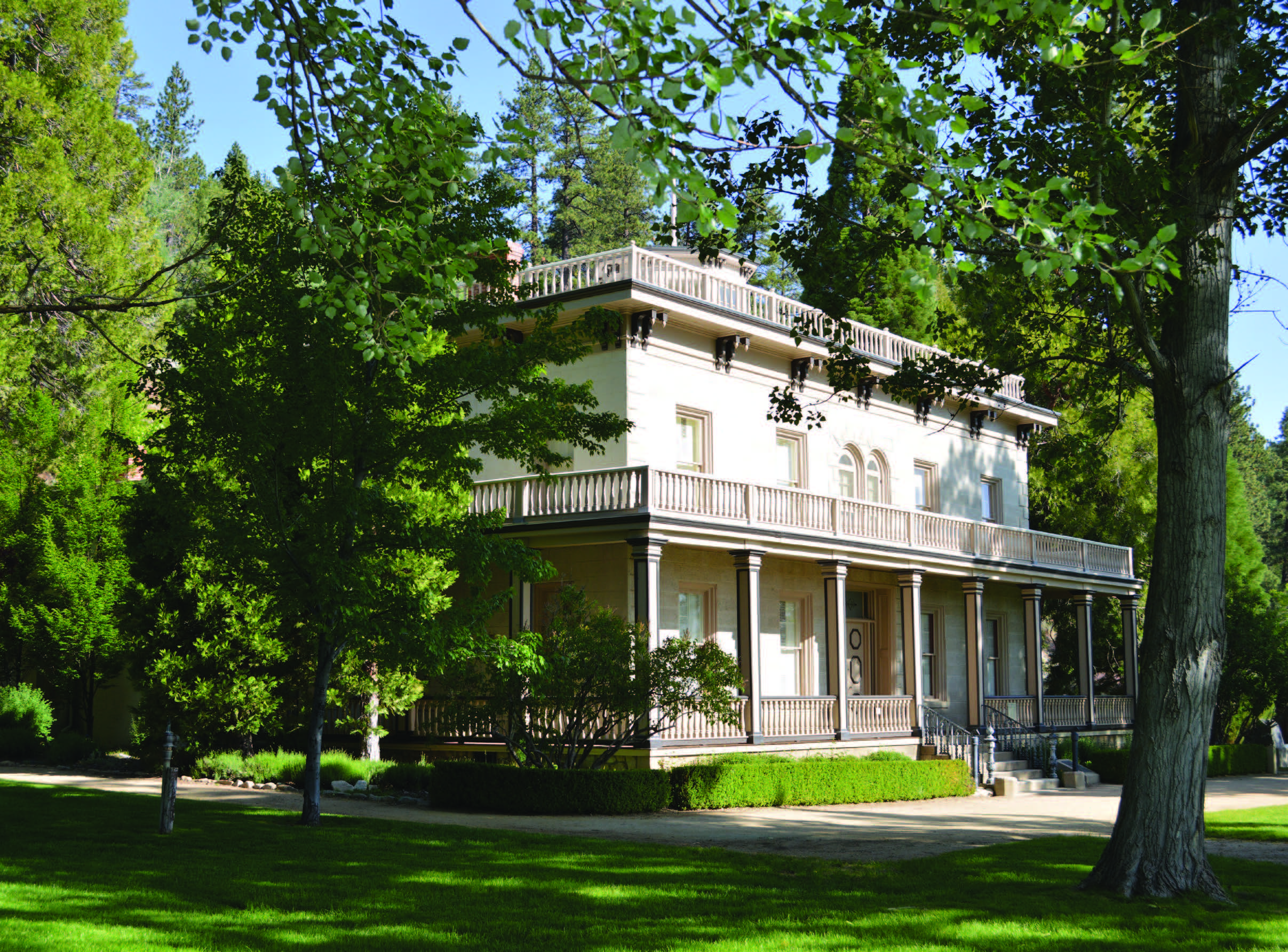
Through the Roaring Twenties and Prohibition, and even the Great Depression, locals found time to spend the day enjoying the fresh air, wide-open spaces, and spring-fed pools at Bowers Mansion. The largest event of the time was the moonlight picnic that occurred each fall. Guests stayed until well after dark, returning home with their acetylene lamps sending faint streams of light upon the dusty roadways. Exhausted children asleep in the back, were dreaming of next summer when they would return to Bowers Mansion.
Soon after Riter turned 80 he decided it was time to sell, but he wanted the mansion and grounds turned into a park. Children had been playing there since Nevada’s mining days, and he be-
lieved it belonged to Nevada’s children. With the help of the Reno Women’s Civic Club, Washoe County purchased the property in 1946 and declared Bowers Mansion a public park. A 1966 county bond allowed for improvements and the building of two new swimming pools.
MODERN MANOR
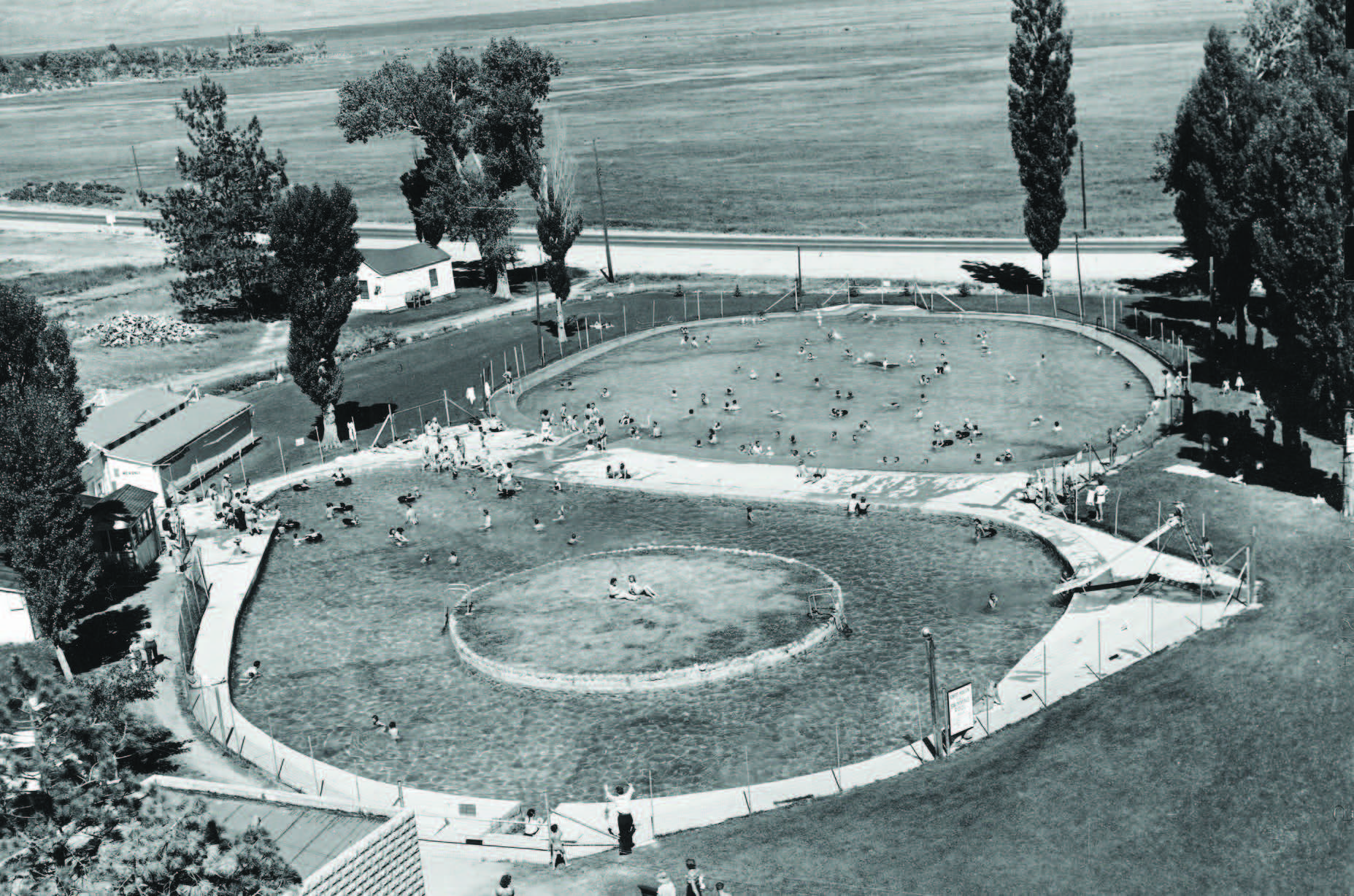
Today, visitors can still enjoy the wide-open spaces of Washoe Valley by simply exiting from Interstate 580 and taking a quiet drive along Old U.S. Highway 395 to Bowers Mansion Park. The mansion is open for tours Saturdays and Sundays from May 17 to Sept. 28, and the park is open daily and is free of charge. There are many picnic tables, and two playgrounds available for children.
Individual picnic tables and barbecue grills are available along with two pavilions for group celebrations and events. During the summer, enjoy the refreshing spring-fed waters of the Bowers Mansion pools, which are open noon to 5 p.m. daily, from June 14 to Aug. 10. The pools may be modern, but the experience has been the same for 150 years.

